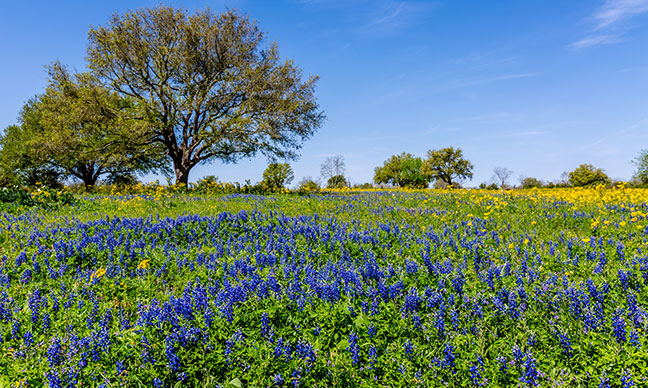Native plants are known for thriving better in their common area. These trees have more benefits in their natural habitat and are usually the representatives of the state they grow in. One of these is the Texas ash tree, a medium tree with a densely branched canopy usually growing in limestone canyons and hills. It is confined to Texas and completely adapted to warm and less humid climate characteristics for the state.
Keep reading to learn more about ash tree Texas, its characteristics, and requirements!
Texas Ash Tree – What you Need to Know
General Information
Texas ash is a medium tree, usually growing to about 45 feet in height at maturity. Its pinnate leaves have a very unique fall color, meaning that the tree provides interest throughout the whole year. There are usually about 5 leaflets and they are more rounded than elongated as in other ash varieties. The wings don’t extend beyond the middle part of the seed, in most cases.
Ash tree Texas is a deciduous tree and prefers very low water needs. In terms of light, part shade exposure will do just fine as long as the soil remains dry. Tree services Texas recommend limestone-based soils, but sandy, clay, and loam soils will do just fine too.
When it comes to the use of a Texas ash tree in landscapes, the tree offers many ornamental features. It has ornamental blooms and fruit and it stays attractive throughout the whole year.
Watering Needs
As with other newly planted trees, flowers, and shrubs, ash tree Texas also needs to be watered thoroughly while young. However, you can start decreasing the amount of water you provide once the tree is completely established.
The tree is completely adapted to Texas’ dry and warm climate, thus it is considered drought-tolerant by most tree service Texas companies. Still, periodic watering during prolonged periods of drought can be helpful, so keep that in mind if you opt for ash.
It is very important to provide just the right amount of water. Underwatering your tree will eventually lead to insufficient growth. On the other hand, overwatering can increase the chances of fungal growth.
Related Post: Best Time To Plant Trees In Texas
Trimming
The ideal time to trim your ash tree is during fall. This is when most trees, including ash, go dormant and stop growing until spring. The trimming is done during this period to allow the tree to heal up before new growth occurs in early spring.
Your ash tree will have different trimming needs depending on its age. We recommend hiring a tree trimming Texas company each year for young trees, while mature trees can be trimmed every couple of years. Still, some minor trimmings are recommended every year even for already established ash trees.
Fertilization
There are a few reasons why using fertilizer is important. It stimulates growth and strengthens the root system. In addition, fertilizer boosts the immune system of your tree, thus reducing the risk of attracting various diseases.
Related Post: Tree Diseases Texas
You will apply the fertilizer depending on when you planted your tree. If you planted it in fall, apply the fertilizer next spring, if you planted it in spring, then apply the fertilizer towards the end of the summer.
FAQ
Q: Are ash trees good trees?
A: Ash trees in Texas are drought-tolerant, relatively pest-free, with beautiful fall colors, and adaptable to most types of soil. In addition, they live for a long time, so taking time in planting and regular maintenance of your ash tree will certainly pay out.
Q: Do ash trees smell?
A: Ash trees usually don’t have a foul smell in Texas. There is a single variety, the Mountain ash tree, that is known for its pungent smell. However, if you find the smell very unpleasant, you can always opt for a different variety and your ash tree will do just fine.
Q: How do I identify an ash tree?
A: There are a few characteristics you should look for to identify ash trees in Texas. Check the limb of your tree, leaves, and whether it produces seeds. When present, ash seeds grow in bunches and are oar-shaped. The leaves tend to be compound.
Q: How much water does an ash tree need?
A: Ash trees usually don’t require too much water in Texas. However, during summer months, experts recommend watering at least once a week to a depth of 30 inches. The same applies if the tree is planted in rock or mulch areas too.
Local Tree Experts Overview
Texas ash tree is native to the area and thrives almost without any problems. The tree is drought-tolerant, well adapted to the soils in Texas, and relatively pest-free. You won’t go wrong if you decide to plant it in your backyard, but make sure to consult with your local arborist about maintenance and requirements!




